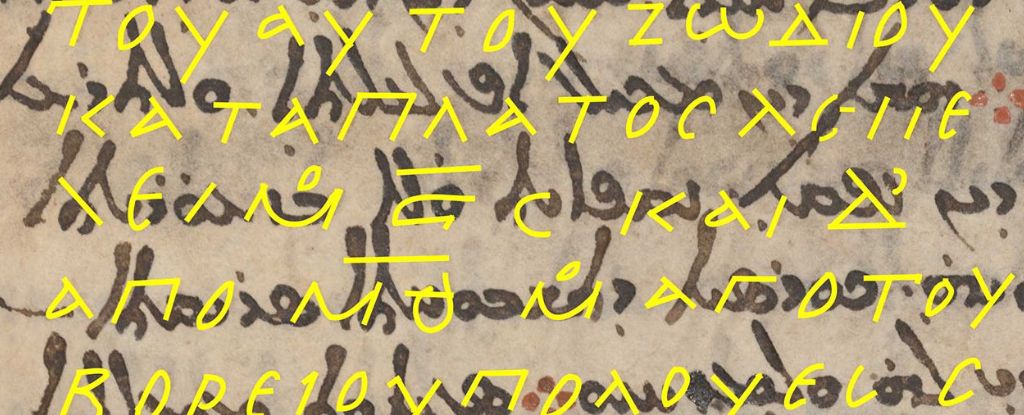A study of a parchment from a Christian monastery in Egypt has shown that the letters in it are written on top of an older text. Multispectral analysis has shown that this may be a fragment of the oldest star catalog of Europe, the author of which was the Greek astronomer Hipparchus.

Find in the medieval chronicle
In 2012, Cambridge biblical scholar Peter Williams worked with medieval manuscripts kept in the Christian monastery of St. Catherine in the Sinai Peninsula in Egypt. He noticed that the letters in this document look somehow strange and suggested that they could have been written on top of an older text.
This situation was not strange for the Middle Ages, because the parchment on which the notes were made was expensive. In 2017, a multispectral study confirmed the assumption and showed that under the letters on nine pages of the document, there is a text in Greek.
While studying the scan results, scientists came across a strange set of numbers. They came to the conclusion that it is nothing but a set of stellar coordinates. For some time, researchers argued who could have left such a record, and only in October 2022 an article was published proving that it could be the oldest star catalog in Europe.
Hipparcos Catalog
When astronomers describe the position of objects in the starry sky, they do not use maps, but coordinates describing the angles at which a star or planet can be observed at a certain point in time. A set of such data for a large number of celestial bodies is called a star catalog.
It is well known that in the Western world, the first such catalog was compiled by the ancient Greek astronomer Hipparchus. It is known about him from numerous works of ancient authors. But this work was considered completely lost.
Historians knew only another work of the scientist, proving that Hipparchus paid great attention to stellar coordinates, discovered the precession of the earth’s axis and puzzled over the question of the immutability of the position of the stars in the sky.
And now an excerpt from the Hipparcos catalog has fallen into the hands of scientists. He describes the positions of the four stars of only one constellation – the Northern Crown. But researchers have no doubt that the astronomer described in this way all the sky available to him.
Why is the found fragment important
The discovered passage is extremely interesting for both historians and astronomers. It is interesting for the first to understand how great the knowledge about the starry sky was in the 2nd century BC. In particular, scientists have long been interested in the fact whether Hipparcos considered the Earth stationary or not.
Astronomers are more interested in the fact that the Hipparchus catalog is more accurate than the Ptolemies, created three centuries later. This makes it possible to assess the correctness of ideas about the precession of the earth’s axis and the proper motion of stars. That is, the questions that interested the ancient scientist himself.
According to www.sciencealert.com
Follow us on Twitter to get the most interesting space news in time
https://twitter.com/ust_magazine
